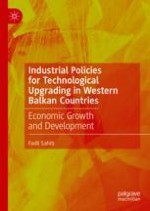2024 | OriginalPaper | Buchkapitel
4. Industrial Policy Practice in Three Western Balkan Economies and Slovenia
verfasst von : Fadil Sahiti
Erschienen in: Industrial Policies for Technological Upgrading in Western Balkan Countries
Verlag: Springer Nature Switzerland
Aktivieren Sie unsere intelligente Suche, um passende Fachinhalte oder Patente zu finden.
Wählen Sie Textabschnitte aus um mit Künstlicher Intelligenz passenden Patente zu finden. powered by
Markieren Sie Textabschnitte, um KI-gestützt weitere passende Inhalte zu finden. powered by
